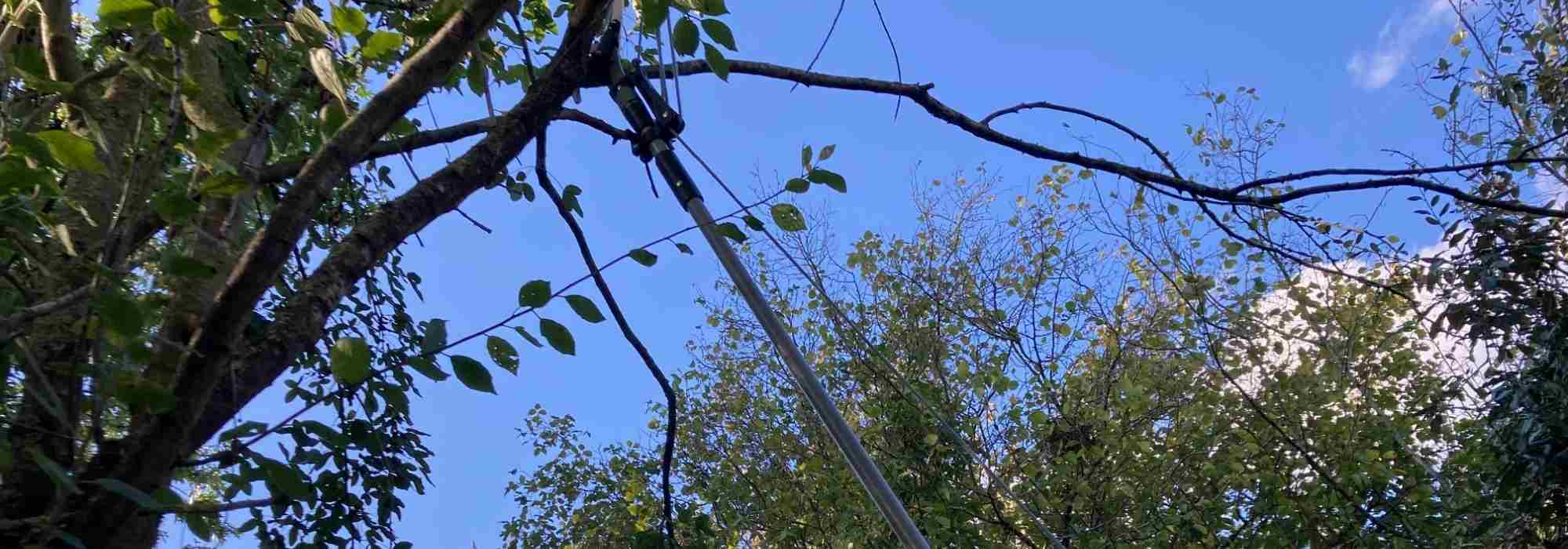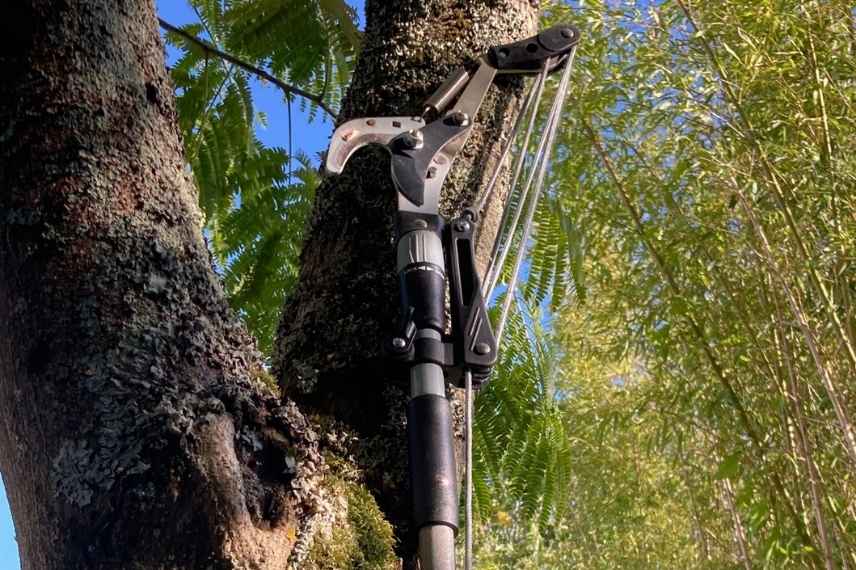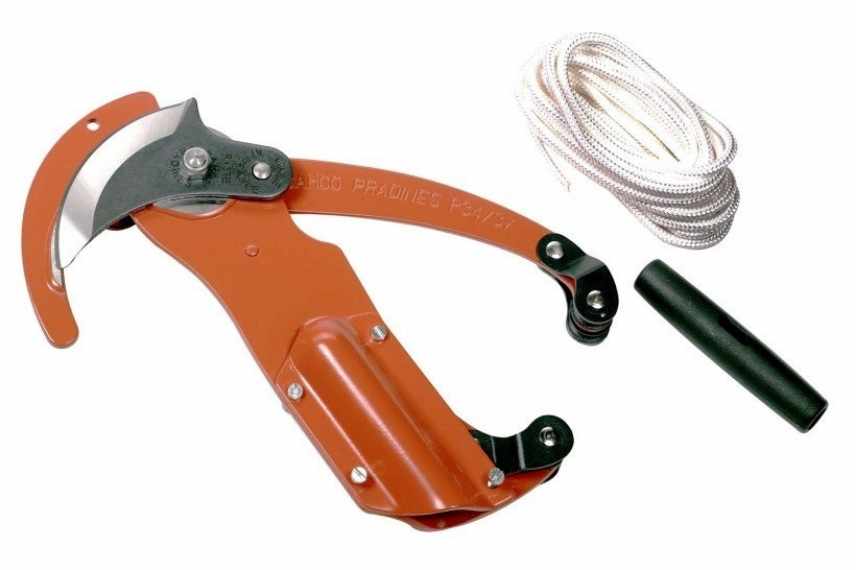
What is the purpose of a pole pruner?
Ideal for cutting high branches
Contents
A pole pruner is a tool for pruning fruit or ornamental trees and bushes. The cutting part, a large pruning shear attached to a telescopic handle several metres long, is operated by a system of pulleys and cord. It is the ideal tool for the gentle pruning of fruit trees, young ornamental trees, and hedge bushes. The pole pruner allows you to prune branches up to 4 cm in diameter safely from the ground. High, dead, or poorly placed branches can be quickly removed with your pole pruner.
How does a tree pruner work?
A pole pruner is a gardening tool used to cut high branches of a tree or a large bush. It consists of a cutting head, the pruning shear, capable of cutting branches with a diameter of 4 cm; a cord to operate it from the ground; and a long handle, often telescopic.
The cutting head can be either scissor-type or anvil-type (like pruning shears). It may also be equipped with a device that allows the head to pivot, as well as a sap scraper, which is very useful to prevent the blades from becoming too sticky. The cutting part is also fitted with a pulley system that multiplies the cutting force by 3 to 5 times. Branches with an average diameter (3-4 cm) can thus be cut effortlessly thanks to the trigger that operates the cord. It is worth noting that there are pole pruners where the pruning shear is straight (cutting from below the branch) and pole pruners where the pruning shear points downwards (cutting from above the branch). The latter are more manoeuvrable in use.
The handle was originally a long wooden pole measuring 2 to 3 m. In recent years, the handles are now made from lighter materials (such as aluminium or carbon fibre) and are often telescopic: some handles can extend from 3 m to 6 m in a matter of seconds.
This surprising name, pole pruner, comes from the tool’s first use: cutting high branches covered with processionary caterpillars.
The pole pruner is a supplementary tool reserved for the “light pruning” of ornamental or fruit trees. This tool is only used to remove a bit of dead wood or certain obstructive branches. For larger jobs, a chainsaw or a lopper will be needed.
But as you will have understood, the great advantage of the pole pruner is being able to work on your trees safely from the ground. However, be careful of branches falling from the tree once cut!

Pole pruner where the cut is made from above the branch
How to choose your lopper?
Choice of Handle
You have two options: a fixed pole or a telescopic handle. The pole is not adjustable, but you can own several of different lengths and change the heads as needed, and it remains very simple in design, thus theoretically more robust. The telescopic handle made of aluminium or carbon fibre is lightweight and adjustable: you can switch from a short length of 1.50 to 2 m, and extend it up to an average of 5 or 6 m, sometimes even more than ten metres.
Choice of “Pruning Shear”
The branch cutter can have crossing blades or straight blades (the blades are curved) and is used for cutting young shoots as part of the maintenance of hedge shrubs or the training of young trees. This type of blade allows for a clean and precise cut for both green wood and dead wood (not too thick). The professional Bahco pole saw features crossing blades (as well as a triple pulley mechanism and a sap guard).
The pruning shear can also be “anvil-style”. One blade is sharp and crushes against a non-cutting part, the anvil. In this case, this type of cutting head is reserved for hard wood or dead wood. The Bahco P34-37 pole saw is a perfect example of this.
The blades of the cutting part must be made of hardened steel and well sharpened.
Please note: some models allow for the attachment of a pole saw to the pole saw, as is the case with the Spear & Jackson 57600 pole saw.
 Bahco Pole Saw with Crossing Blades</caption]
Bahco Pole Saw with Crossing Blades</caption]
How to use a pole pruner?
- Attach the cutting head to your telescopic handle or pole;
- Adjust the appropriate length of your handle (if it is adjustable) and the required cutting angle on models with a pivoting head;
- Position the blades above or below the branch to be cut (depending on the design of the cutting head) so that the blades encircle it, just like with any branch cutter or pruning shear;
- Press the trigger in your hand to activate the cord and thus the closing movement of the blades.
- Ensure you cut cleanly and precisely, and avoid choosing a branch with too large a diameter.
First, remove any dead wood and poorly placed branches. Keep in mind not to prune too much at once, and to respect the pruning dates for each species of tree or bush. In short, prune with your pole pruner as you would with your pruning shear, respecting the plant as much as possible.
Little tip: a pole pruner can also be used standing to cut branches close to the ground without bending down. Just use the tool in reverse and adjust the handle length to 1 m – 1.20 m depending on your height.

- Subscribe!
- Contents































Comments